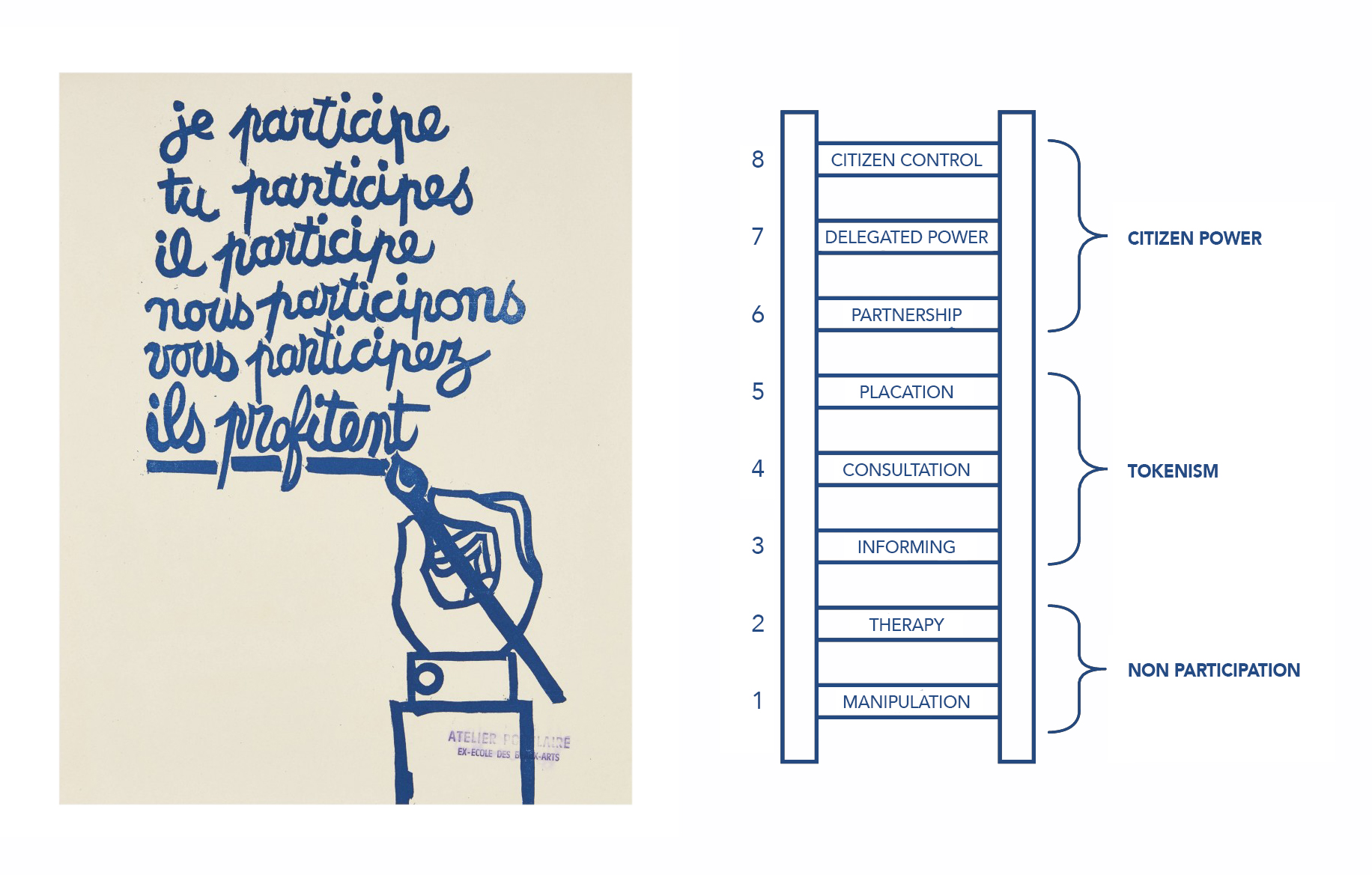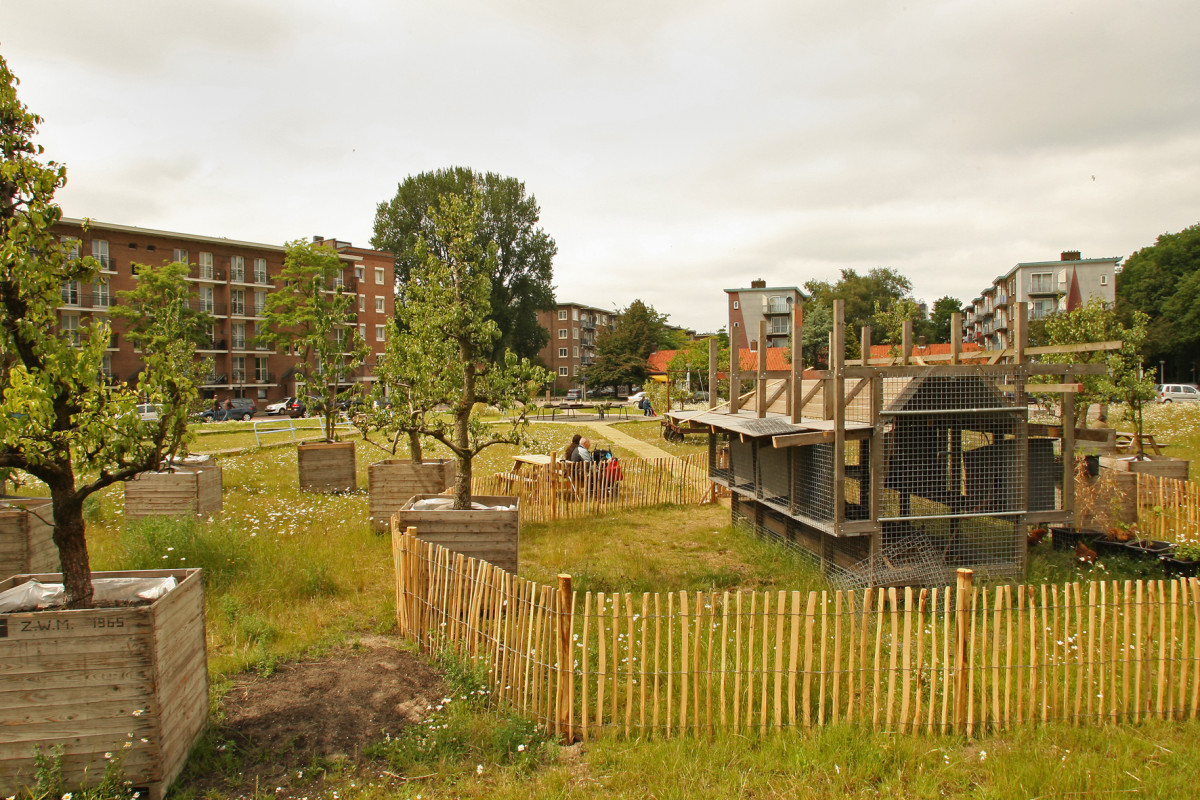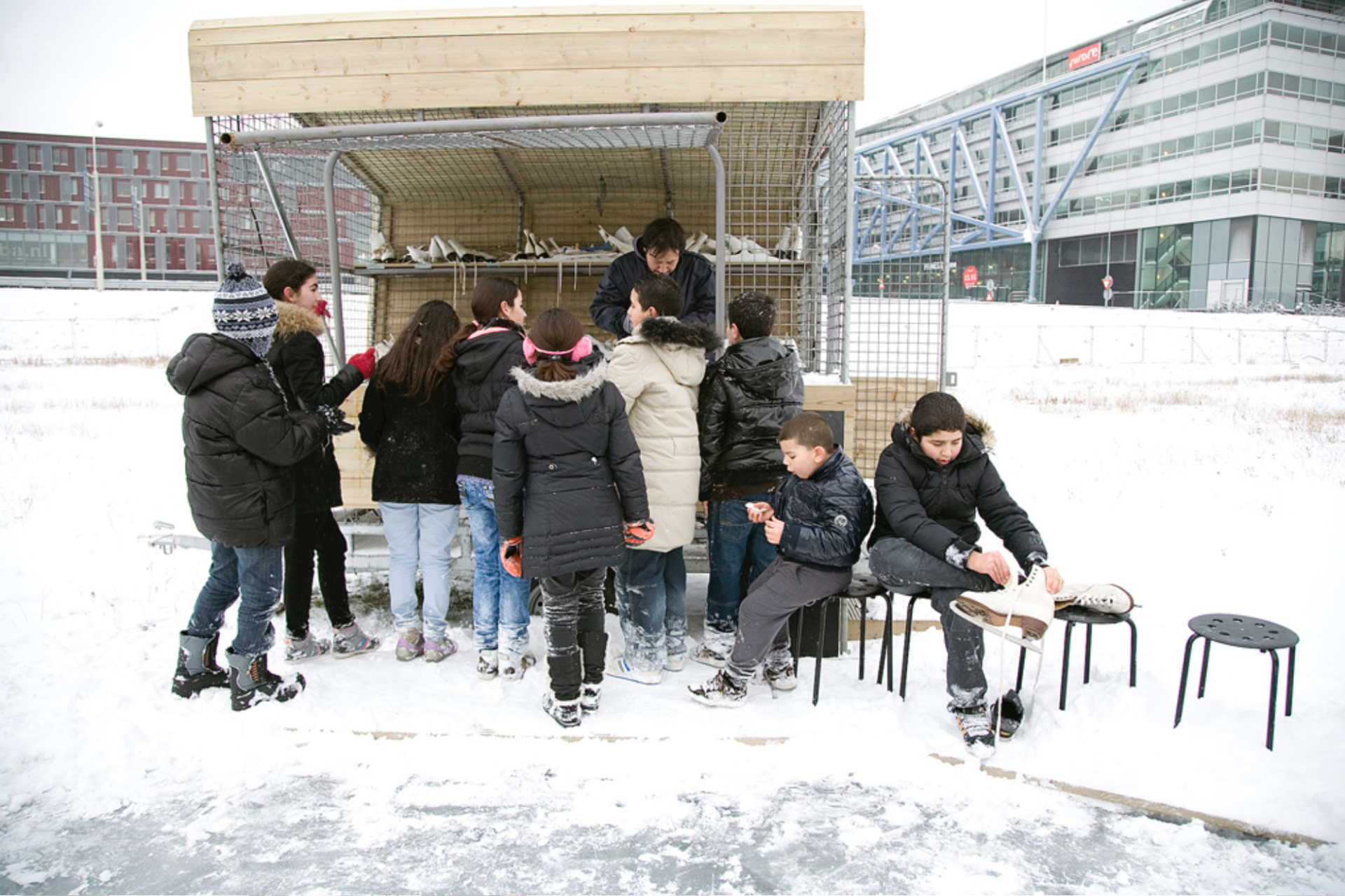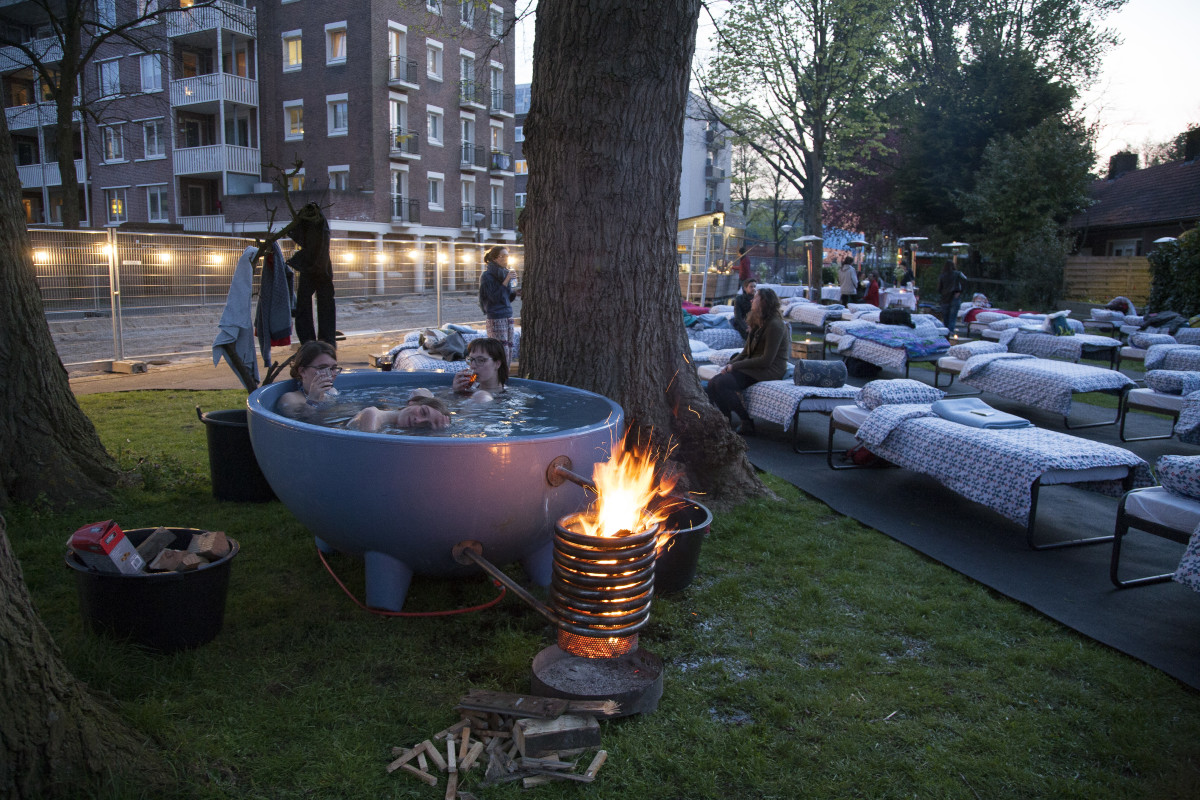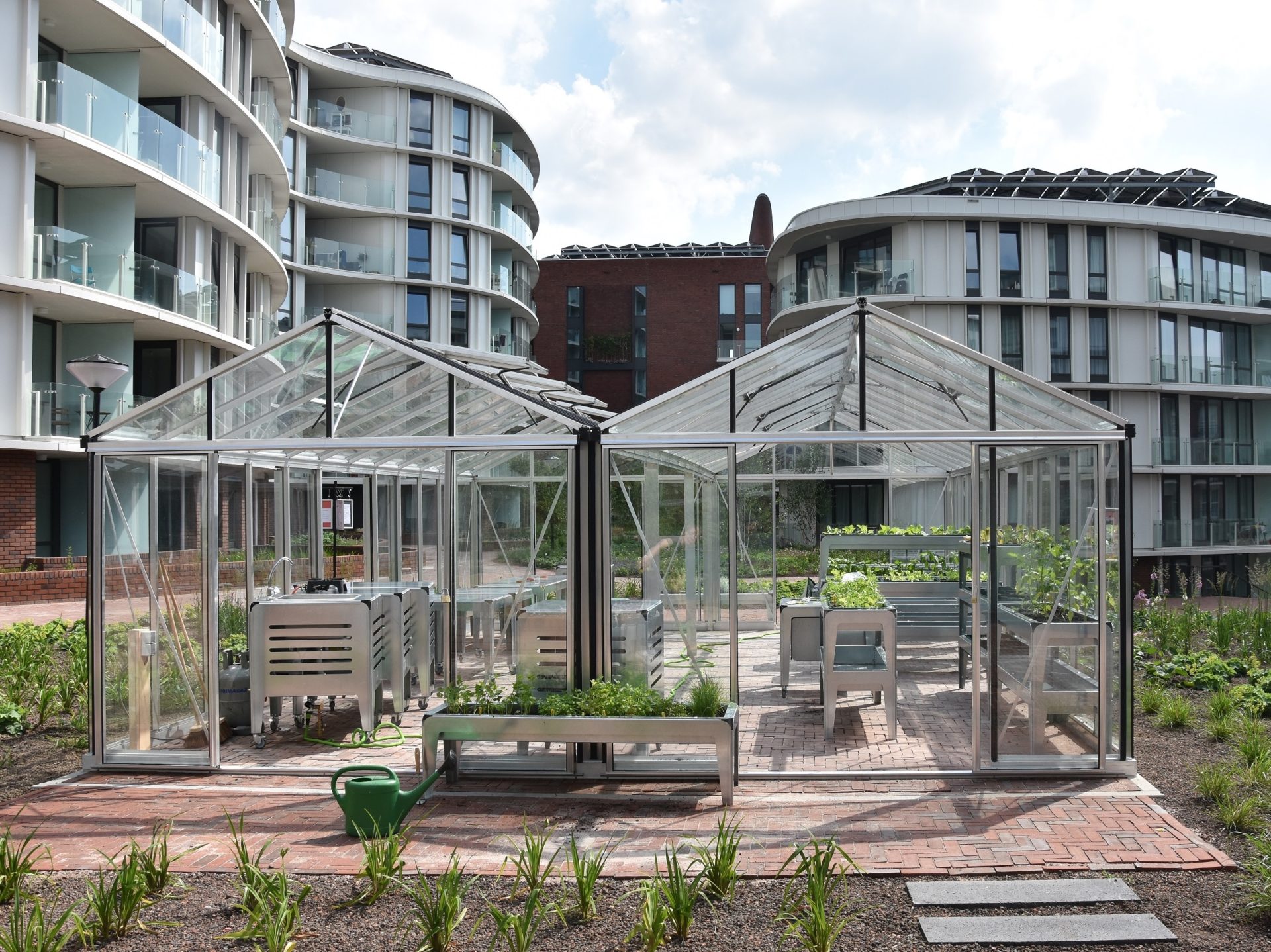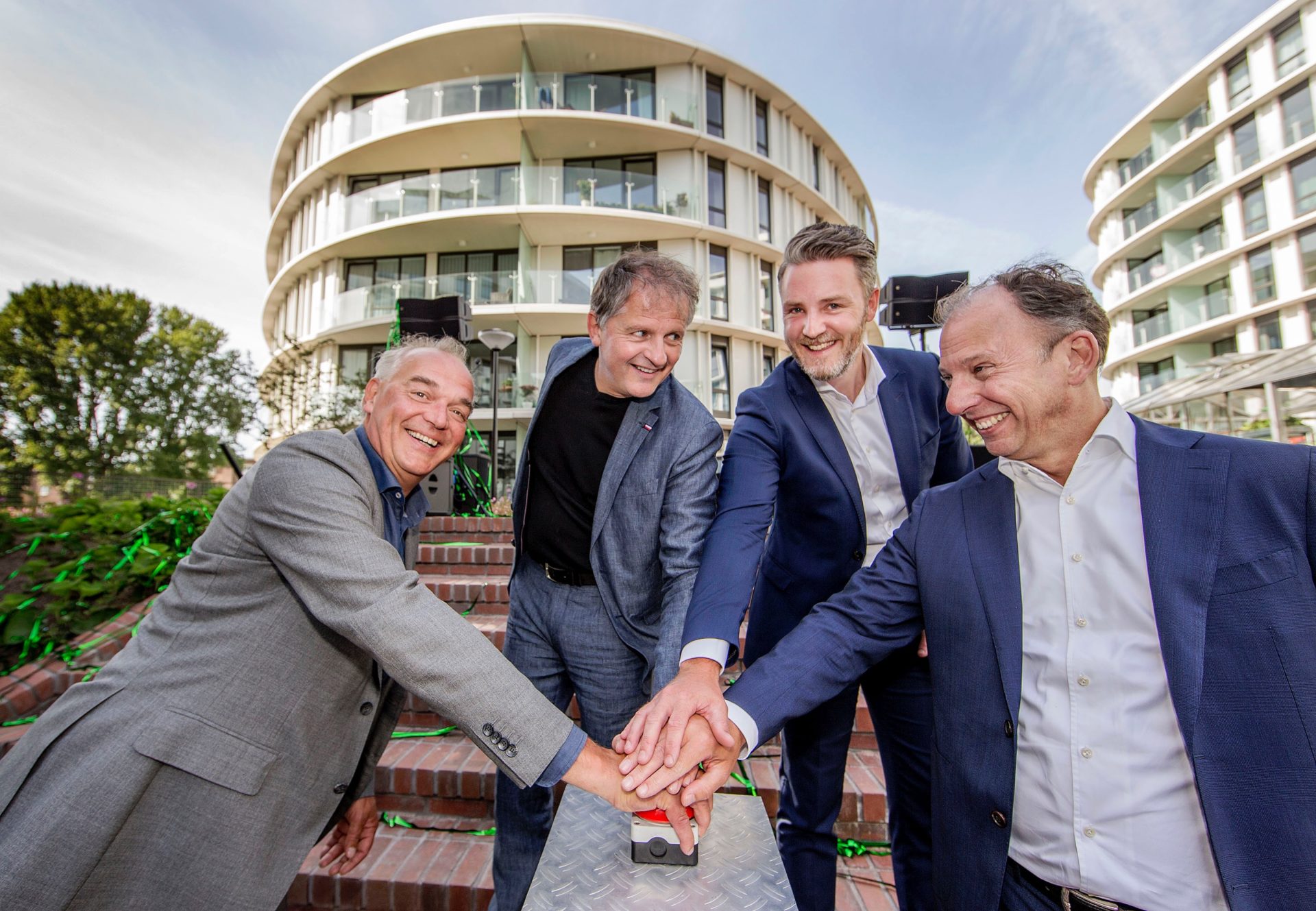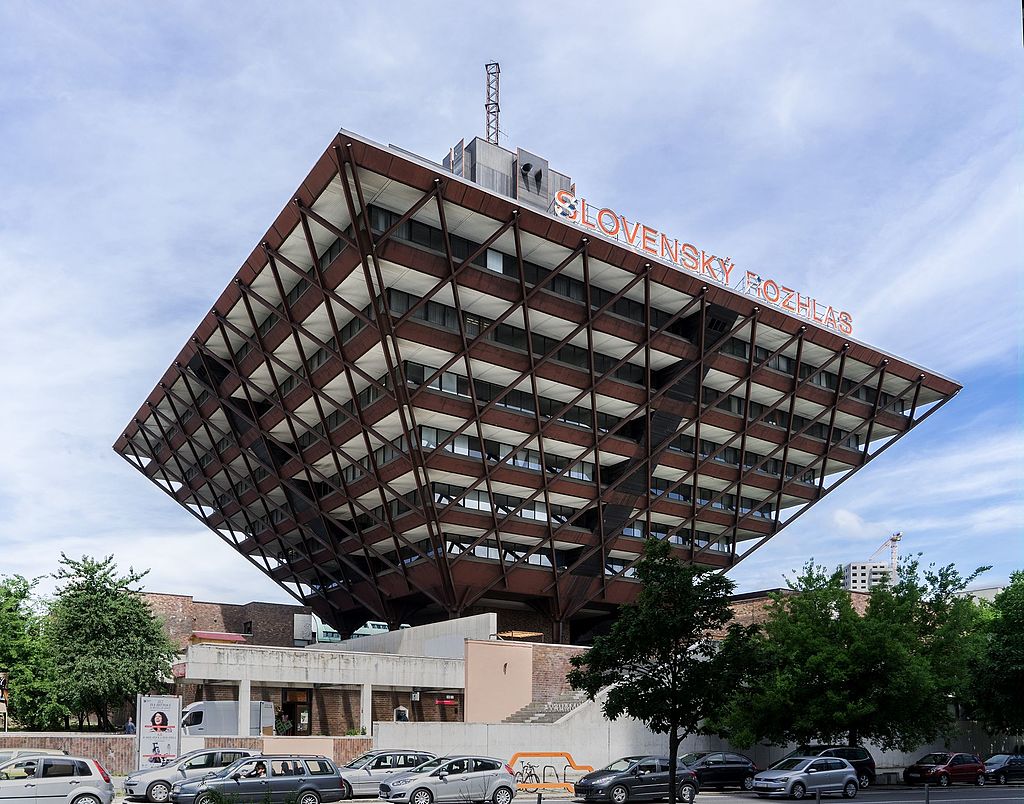Concepts like social sustainability, community participation, and city-making are usually very popular during times of economic crisis when local governments tend to be supportive of practices that offer low-cost, bottom-up, and often temporary solutions to urban problems. Yet there is a tendency to use these terms to support projects and interventions led by financial motives rather than social ones.
The recent case of the ‘Rhapsody in West’ development in Amsterdam sheds light on this issue. After almost four years of negotiations, and with construction now complete, the question remains: was the community really at the centre of the process, as the term “participatory” suggests? By tracing how the development unfolded and observing the relationships between different stakeholders, it becomes apparent that labels like ‘community participation’ resist unequivocal definitions, often leading to diverging expectations and conflicting motivations among the parties involved.
The ambiguity surrounding the definition of “community participation” causes problems because it allows a lot of room for misappropriation. In 1969, Sherry R. Arnstein published A Ladder of Citizen Participation, in which she discussed several layers of “manipulation” dressed up as “citizen participation”. Some rungs are difficult to relate to, as they clearly refer to the typical U.S. social organization of the 1960s, where neighborhood councils and group therapy sessions were commonly used to placate communities and inculcate dominant values. Yet, some levels of Arnstein’s categorization of different forms of (non-)participation still apply today, resonating deeply with projects such as the one discussed here.
In a chapter about what Arnstein refers to as “consultation” (the fourth rung of the ladder) she explains how consulting citizens through meetings and surveys remains a window-dressing ritual when there is no assurance that people’s concerns and input will be taken into account: “What citizens achieve in all this activity is that they have participated in participation. And what power holders achieve is the evidence that they have gone through the required motions of involving ‘those people’”. Simply put, citizen participation becomes a cover-up.
In the book Re-Act. Tools for Urban Re-Activation, participation is defined as “a slippery tool that evades definition: […] neither easy, nor immediate, nor always successful, […] perhaps the instrument most open and unpredictable”. Several of the cases presented in the book used the tool of community participation, and some of them show how unsuccessful participation can be, and how greatly the results can deviate from initial expectations. The case of Rhapsody in West (of which more shortly) is a useful representation of the challenges and possible shortcomings of the complicated relationship between communities, activists and developers. On the surface, these challenges seem to be mostly linguistic and easy to resolve, if there is an attempt to define the words that are used upfront, and to set common goals and expectations. By examining the process closely, though, the profile of this ambiguity starts to sharpen into a tool to hide divergences in motivations that words can hardly reconcile.
The story of Rhapsody in West started in 2008, when the Jan van Schaffelaarplantsoen (an empty plot adjacent to the Amsterdam Ring), was taken over by Cascoland, a collective of artists and designers already active in the neighbourhood with projects focusing on community reappropriation of public space. The neighbourhood in question was the Kolenkitbuurt, built between 1949 and 1953, and considered “the least popular neighbourhood in Amsterdam” in 2004. The institutional support enjoyed by Cascoland was the result of a process started in 2007, when the Dutch government compiled a list of the country’s least popular neighbourhoods in order to develop strategies to improve their liveability and prevent ghettoisation. Because of their experience working in underprivileged areas in South Africa, Cascoland was invited to operate in the area to promote urban participation, and improve living conditions and social security. In a Situationist-inspired détournement (albeit with the full support of the municipality), Cascoland was able to give new life to the area over the following years through a series of interventions and activities centred especially on the Jan Schaffelaarplantsoen. That is, until the economic crisis receded and developers were once again open for business, at which point every empty plot was once again considered a potential business opportunity.
As the ongoing housing shortage combined with the renewed interest of real estate investors has turned Amsterdam land into an endless source of profit opportunities, the municipality decided to issue a tender to redevelop the Jan van Schaffelaarplantoen with housing blocks. The fact that the community, after taking full responsibility for the area with the help of Cascoland, did not have a seat at the table in this process could be seen as the first shortcoming. The plot, which had become the centre stage for a series of neighbourhood activities, was treated just like an empty plot, and Cascoland was not even consulted on the matter. Surprisingly, the chosen proposal by Tangram Architects and Urban Landscape with Urban SYNC featured the involvement of Cascoland in all phases of the project. While this seemed to guarantee the participation of the community in the long term, the plot and the right to develop were sold to real estate company CBRE soon after the tender process, and no legal requirements were made to respect the agreed-upon tender conditions.
Meetings between CBRE and the community have been held regularly, although for a long period they seemed to have little to no tangible results for the development, and they became a source of frustration for both Cascoland and the community. Luckily, during the last period of the process, Cascoland was finally able to achieve some of the desired results on behalf of the neighbourhood. Most notably, they managed to grant priority to the current residents in securing the new apartments (as long as they could afford them) and agreed on designating “community managers” among the people living in the estate. Opened in June 2019, the Kolenkitkas is maybe the most significant success of the participatory process. The small greenhouse in the courtyard between the buildings provides not only a small space for public use, but it grants public access to the whole development, preventing it from drifting towards the typology of gated communities.
Cascoland tried to steer towards a new kind of development, with strong social and spatial ties with the existing neighborhood. Unfortunately, though, the lack of long term commitment to the neighborhood by the municipality, and the delay in initiating a serious dialogue with the community by the developer rendered the process difficult and the results less impressive than expected. The initial promise of keeping the apartments’ prices between 750 and 1000 euros was not honoured: only 14 apartments were officially rented for less than 1000 euros, but ultimately they were all more expensive due to service costs and obligatory parking spots. Although priority was granted to local residents, the 239 new apartments ended up being too expensive for the majority of them. This was also because prospective tenants needed to demonstrate an income requirement of 3,25 times the rental price, making the project inaccessible to most Amsterdammers looking for a place to live.
The project, described on Tangram Architects website as a “unique collaboration between designers, contractor, investor, and surrounding residents” seems too similar to any traditional top-down housing development, where a few details were added to keep the community happy. While they are rightly proud of the achieved results and of their success in involving the community, one could argue that Cascoland’s role was, to a certain extent, exploited for goals they neither share nor support. Had their role as mediators just provided an easy way to seemingly involve residents and avoid any social tension?
Cascoland’s initial experience with community participation in its small, bottom-up project in the Kolenkitbuurt was mostly successful. It was when a new powerful stakeholder became part of the process that some of the shortcomings of the participative approach became clear. Although Cascoland’s main interlocutor in the Kolenkitbuurt was initially a public one (the local government), they had to open a conversation with a private, profit-driven party (the project investor, i.e. CBRE) as the larger development process started. Their focus on profit did not, however, directly align with more social responsibilities. As a testimony to the distance between CBRE’s and Cascoland’s goals, the developer recently suggested the Rhapsody in West process to be used as a blueprint, and Cascoland to take the lead in community participation processes in other developments. As Cascoland does not share CBRE’s globalist approach, they declined the offer by highlighting that the success of the process was mainly due to their years of engagement with the local community in the run-up to the development.
Rhapsody in West is but one of countless projects to encounter a collision between public and private interest. Examples all over the world show community-initiated projects abruptly turned into profitable businesses, and it is of course far from rare to find that the same community that made a project possible in the first place is later excluded from it. Take, for instance, POD PYRAMÍDOU, an urban gardening project located on the rooftop terrace of the Slovak Radio Headquarters in Bratislava. The project started in summer 2014 as a collaboration between activists and the owner of the building, the Slovak National Radio and Television (RTSV). When the organisation Na Streche (Slovak for “on the roof”) found the terrace of the RTSV Tower, the space had been abandoned for years, inaccessible, covered in weeds, graffiti, broken glasses, syringes, and needles. The building had previously been listed by the Daily Telegraph as one of the ugliest in the world. Eager to revitalise the terrace, RTSV immediately accepted the invitation to collaborate on the project. The intervention on the rooftop soon turned into a success story, with institutional entities praising the successful partnership. But as soon as the place became popular, RTSV saw opportunities for profit and started to take back control of the space. In 2015, RTSV cancelled the contract, and the volunteers, together with their gardeners, trees, and gardening equipment, were evicted from the rooftop to make space for expensive Christmas market stalls.
A similar turn occurred during the well-known redevelopment of the High Line in New York. Originally an elevated rail structure running through Manhattan to carry goods and mail to factories and warehouses, the High Line had been abandoned and left covered in vegetation when, in 1999, the community rallied under Joshua David and Robert Hammond to repurpose the structure as a public space. After an invited design competition, the winning team realised the project in three phases with the involvement of the New York administration. The then-mayor Michael Bloomberg and City Council tailored the zoning regulations, granting repurposing of the infrastructure as a park, and creating the conditions to develop the construction in multiple stages. What had started as a bottom-up project with strong involvement from the community eventually became a huge real estate success. The project generated an unexpected rise in surrounding property prices, driving out long-time residents and subsequently sparking several initiatives to save social housing in the surrounding area. Depicted by many as a successful example of adaptive reuse emerging thanks to strong collaboration between public and private, the High Line Park can also be seen as a striking symbol of Manhattan’s rising inequality, often driven by an opaque intertwining between public and private interests. The park, now a major tourist attraction, is not successfully catering to the needs of the community that initially strived to make it happen. What is more, it made the whole area less accessible for that community.
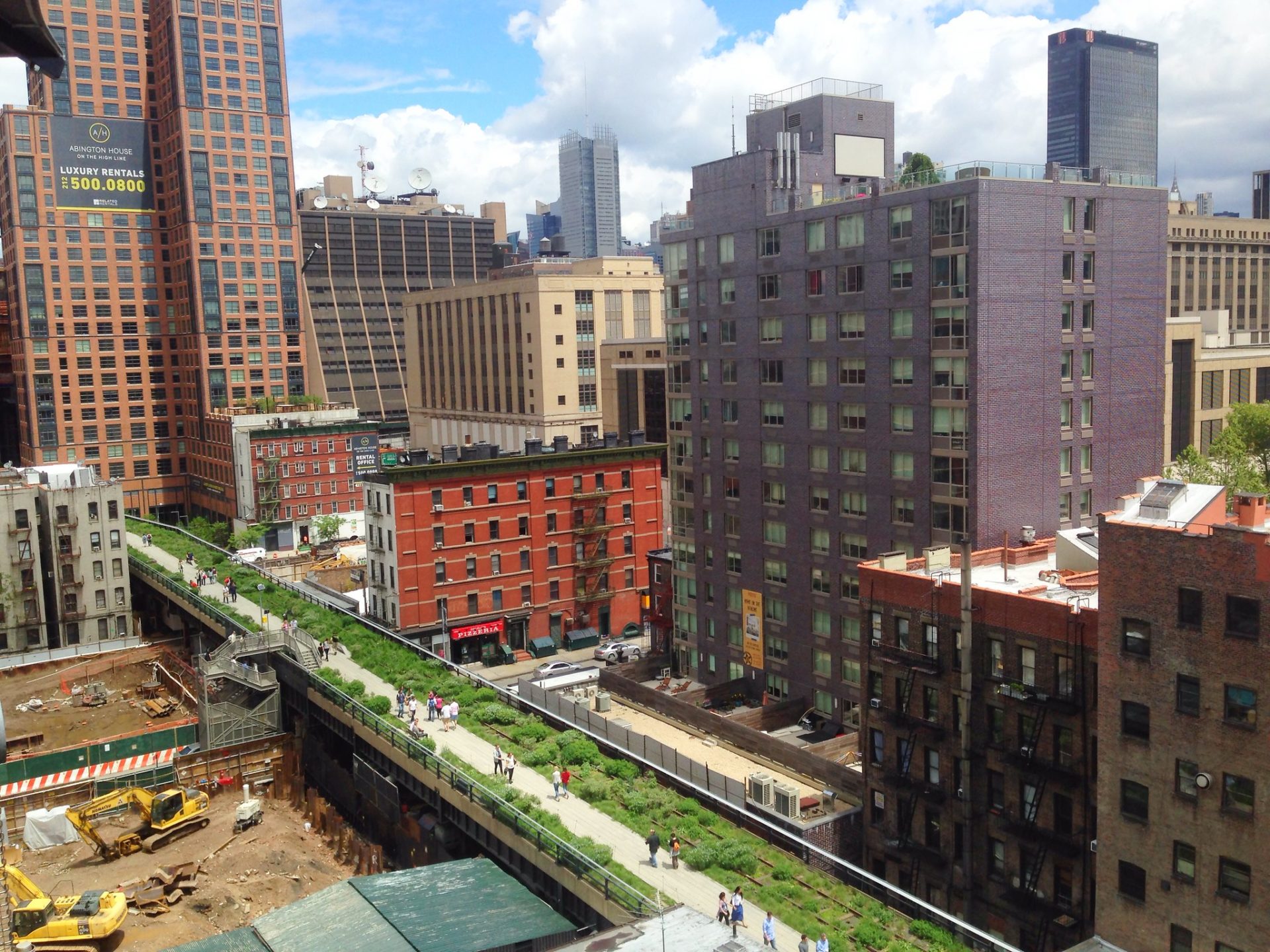
High Line New York, 2014.
David Shankbone, Flickr
These cases demonstrate how difficult it is to support the role of communities when economic interests are at stake. In both cases, as well as Rhapsody in West, institutions are unable to honour their commitment to the community. Mayors and city councils seem ever ready to praise projects that involve the community, but are very quick to evade their responsibility for safeguarding community participation. As already mentioned, the problem starts with the word itself, participation, and its inability to translate into reasonable benchmarks. With a focus on the process and not the result, and its complete lack of information on if and how participants will be able to exert an impact, the word participation seems to lend itself well to empty advertising. Indeed, words are important, and we should prefer less ambiguous, more result-oriented ones like ‘co-creation’ or ‘co-design’. At any rate, not only institutions, developers, and architects should make an effort to define the terms that they use upfront, but communities and those who make efforts to defend them should also be wary of how their work might be used within profit-driven developments.

